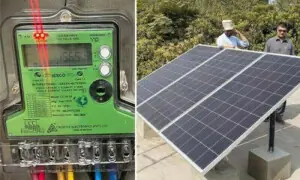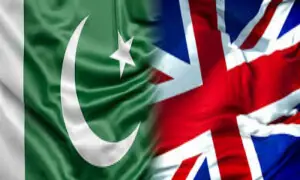Policymakers concerned over surge in solar panel installations, provincial distribution plans
The rapid increase in solar panel imports and installations across Pakistan has prompted alarm among policymakers, particularly following provincial announcements to distribute solar panels to low-income households either for free or at minimal cost. This situation was highlighted in a recent power sector meeting attended by the Prime Minister.
The Sindh government plans to provide solar panels to 200,000 households, while Punjab and Khyber Pakhtunkhwa aim to supply 100,000 panels each, and Balochistan will distribute 50,000.
Wealthier consumers are increasingly opting for rooftop solar photovoltaic (PV) systems, and agricultural and industrial users are transitioning away from the grid due to rising electricity tariffs.
Provincial initiatives are primarily targeting lifeline consumers, who represent 4% of total users, as well as protected consumers using 0-200 units per month, comprising 48% of the total consumer base. Reports suggest that around 2,500 MW of solar systems have already been installed by domestic users.
This trend has been a focal point in public hearings at the National Electric Power Regulatory Authority (NEPRA), where the current status of solarization was discussed. The Power Division warned that a decline in grid consumers would shift the burden of capacity payments to those remaining on the national grid. They projected that ongoing solar adoption could lead to a tariff increase of Rs2.50 per unit by 2034.
Moreover, energy sales and demand from the grid have dropped by approximately 8% to 10% during daylight hours, attributed to the growing use of solar energy. A typical 10 kW net-metering system allows consumers to bypass the grid’s fixed costs of Rs20 per unit, with average savings from behind-the-meter installations around Rs7 per unit.
Read more
Rising solar energy use adds financial strain on grid consumers
Pakistan to replace solar net metering with gross metering: report
In the fiscal year 2023-24, an estimated Rs200 billion in grid fixed costs were shifted to non-solar consumers, resulting in a tariff increase of about Rs2 per kWh. With significant solar imports expected this year, grid demand could decline by over 10%, potentially reaching a 15% reduction. This shift might lead to a 17% rise in the base tariff.
If solar integration reduces grid demand by 5% this fiscal year, non-solar consumers could face a cost shift of Rs 131 billion annually. Doubling that reduction to 10% could increase the financial burden on non-solar users to Rs261 billion.
For the latest news, follow us on Twitter @Aaj_Urdu. We are also on Facebook, Instagram and YouTube.




















Comments are closed on this story.